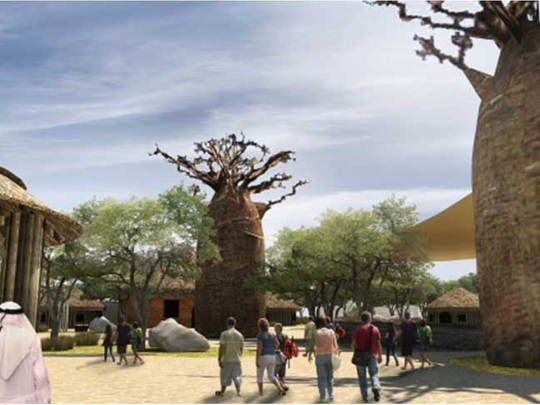
Dubai: Over the next few days, the new zoo in Dubai will be welcoming a new batch of animals – none other than the endangered Asian elephant.
On Wednesday, officials from Dubai Municipality confirmed that a herd of elephants will be making Safari Park their new home, adding to the growing number of animals that already include lions, bears and bats.
“A team specialising in safari parks is currently coordinating with the various local authorities, such as the Ministry of Climate Change and Environment and Water, [in addition to] international animal organisations… to ensure that the animals are safely relocated to their new environment,” said a municipality official.
According to WWF, Asian elephants are the continent's largest terrestrial mammals.
They can reach almost six-and-a-half metres in length and three metres at the shoulder, and can weigh as much as five tonnes.
Located at Al Warqa’a 5, the zoo covers 119 hectares at a total cost of Dh1 billion, and will hold 10,500 animals from all over the world.
“The safari park will have more than 350 rare and endangered species, and the wildlife centre will act as an international with its sister safari parks worldwide,” he said.
The plans for opening a new zoo to replace the current 1.5 hectare zoo at Jumeirah Road has been in the pipeline for nearly a decade.
Since construction on the project started taking shape from 2012, all of the 1,000 animals and birds can finally look forward to relocating to their new home – in temperature controlled cages – opposite Dragon Mart.
“Dubai Safari Park aspires to become one of the five best safari parks in the world over the next five years and is preparing its facilities to accommodate more than 10,000 visitors a day,” said the official.
Work on the project is proceeding according to schedule, assured officials, who also confirmed that the park is 75 per cent completed and will be ready by the end of 2016.
The new zoo, which has an allocated parking lot for 3,600 cars, is divided into three main villages: The African Village, The Arabic Village and the Safari Village, in addition to a wadi area.
Each village features unique architecture, “and the visitor’s journey will feel as if they are travelling to different parts of the world,” said a municipal official.
The official also added that the areas will reflect the natural habitat of the animals and plants that are exhibited in it, and there will be as many as 200 different species of plants.
Renewable Energy
No cost was spared to ensure that Dubai’s Safari Park adopted environmentally-friendly measures, featuring cutting technology.
The first stage was to transform the waste landfill at al Warqa’a, which was levelled and reclaimed to provide a suitable site for the tourism project.
Dubai Municipality on Wednesday announced that the implementation of solar energy will also be used to generate electricity and operate the irrigation system, in addition to providing energy to automatic vehicles and other modes of transportation and entertainment facilities.
“The project layout took into consideration the flexible movement of visitors, whether on foot or through the use of various environment-friendly means of transportation such as the tram, cable cars, bicycles, as well as electric vehicles,” said a municipal official.
The transportation provided by Safari Park will carry people inside the venue or from the facility’s 3,600 parking lots, which will be separated from the service routes allocated for animals and workers.
The park’s wildlife centre will also play a major role in the development of an effective program for preserving nature, which will involve the genetic breeding of plants and animals.
Once opened to the public by the end of 2016, visitors at Safari Park will have access to a 22-hectare Open Safari.
Dubai Municipality said that the safari area will provide visitors with an hour-long tour on a 4x4 vehicle, allow guests to ride an Asian elephant, and watch reptiles and birds carry out performances at the Open Theatre. Visitors can also feed giraffes and elephants, and stop to watch the hippopotamus during the guided tour.












